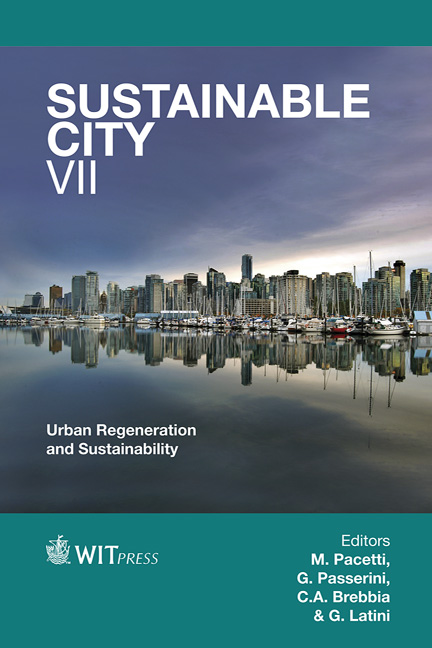Overcoming Unsustainability: Retrofitting American Suburbs With High-density Built Environment
Price
Free (open access)
Transaction
Volume
155
Pages
12
Page Range
11 - 22
Published
2012
Size
797 kb
Paper DOI
10.2495/SC120021
Copyright
WIT Press
Author(s)
P. J. Armstrong & M. M. Ali
Abstract
The problems of suburbs are well-known: suburban sprawl, dependency on automobiles and consequent waste of energy, greater carbon footprint, loss of land, etc. These problems can be overcome, before the suburbs reach a breaking point, with mixed-use high-rises and mid-rises in which living can be made enjoyable by creating the ground plane-like environment above with sustainable vertical urban design concepts. These new buildings can be built with recycled and re-usable materials, and clean-energy environmental technologies such as solar panels, wind energy, hydroelectric, and efficient cogeneration power plants. Air quality—both indoor and outdoor—can be improved and a community environment can be created by providing mixed-uses that bring together civic, education, recreation, exercise, and live/work functions and facilities. The compactness of the built environment and the high vertical density will allow walk-up communities with pedestrian-friendly walkways to stores, shopping, entertainment and other suburban commercial and mercantile neighborhoods. This will reduce the use of cars, make people healthier, and reduce traffic gridlock in the main city’s central business district (CBD). A new 21st century model is needed for the American suburbs that are stretching cities to their limits. While this paper focuses on American suburbs, the authors’ proposition can be applied to the suburbs of cities internationally where similar conditions prevail. Keywords: high-density, urban sprawl, compact communities, planning strategies, mixed-use development.
Keywords
high-density, urban sprawl, compact communities, planning strategies, mixed-use development.





